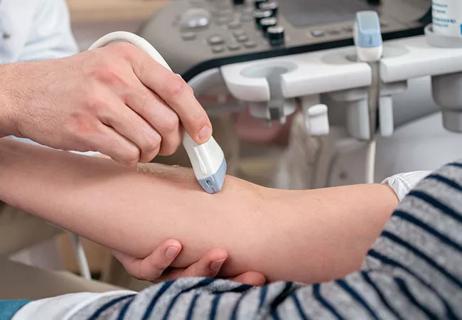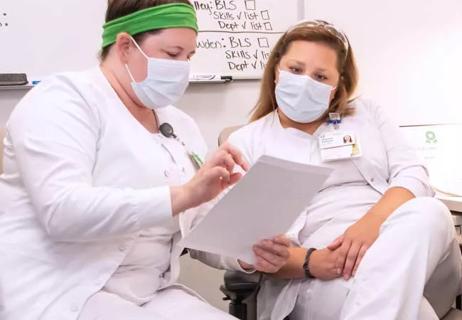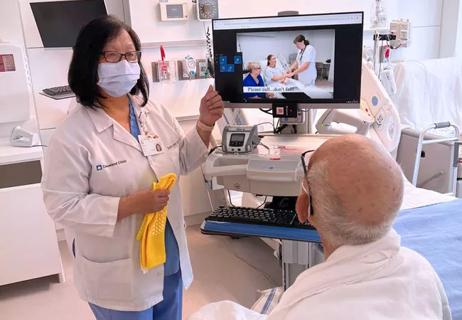Since the Joint Commission identified alarm fatigue as a national patient safety issue in 2014, hospitals across the country have been working to create effective alarm management policies to meet National Patient Safety Goals.
Cleveland Clinic is a non-profit academic medical center. Advertising on our site helps support our mission. We do not endorse non-Cleveland Clinic products or services. Policy
At Cleveland Clinic, a dedicated off-site central monitoring unit (CMU) provides 24/7 secondary cardiac telemetry monitoring for non-critically ill patients at the health system’s main campus and a number of regional hospitals. To avoid unnecessary monitoring of patients at low risk, the CMU team developed and rolled out standardized criteria for assigning patients to telemetry in 2014.
Even after revising telemetry monitoring use, nuisance alarms still accounted for 49 percent of all telemetry alarms outside of Cleveland Clinic’s intensive care units in 2015, averaging 14,000 alarms per month. In 2016, Associate Chief Nursing Officer Kim Hunter, DNP, MBA, RN, NEA-BC, Clinical Director of the Neurological and Orthopaedic & Rheumatologic Institutes, set out to complete a quality research study to examine differences in the rates of nuisance alarms between a 34-bed unit completing usual telemetry alarm management and a 34-bed unit that implemented a bundled telemetry alarm reduction intervention.
“Our goals for trying to reduce nuisance alarms were to give patients a more soothing environment in which to heal, give nurses fewer ‘false’ work interruptions, and allow CMU teams to focus on important alarms that require nurse follow-up,” says Dr. Hunter.
Using a two-group prospective, longitudinal design, the bundled intervention involved the following actions each day:
Further, nurses began routinely pausing telemetry at the central monitor when patients were off telemetry for more than two minutes.
“In nurse huddles we explained what we were doing, and we had a checklist next to the bedside as a reminder,” says Dr. Hunter. “Nurse managers enforced the new approach, which we hoped would ultimately save nurses time, with fewer interruptions and calls from the CMU, and improve patients’ rest.”
Telemetry alarm data were collected for four months – two months before and two months after intervention. Post intervention, the proportion of nuisance alarms was lower in the bundled-intervention group. The intervention was associated with a 29 percent decrease in the odds of nuisance alarm events.
“The bundled telemetry alarm intervention stabilized nuisance alarms during the two-month intervention period at a time when the usual care group had an increase in nuisance alarms,” says Dr. Hunter.
Intervention implementation should be supported for a longer period and across more units to better understand true effects. Ultimately, it is important for clinical nurses to develop new ways of solving old problems.
Jared Leal, BSN, RN, Nurse Manager of the intervention unit, says, “It may be that over time, we refine the bundled telemetry alarm intervention to make it even more valuable and less time intensive for nurses, but our current results provide a great starting point for changing practice.”
In addition to Dr. Hunter, the research team included Edward Mascha, PhD, and Nancy M. Albert, PhD, CCNS, CHFN, CCRN, NE-BC, FAHA, FCCM, FAAN.

Study shows ultrasound can be valuable tool for improving patient satisfaction by reducing failed IV insertions

New system uses vital signs to predict need for further intervention

Findings reveal personal and professional factors that influence nurses’ interest in medical research

Nurse scientists bridge divide between bench and bedside

Individual and population factors play a role

Study looks at cardiopulmonary arrest and activation rates

Video education and nurse-led reinforcement help with fall risk awareness

Further research into collaborations may help strengthen nursing science